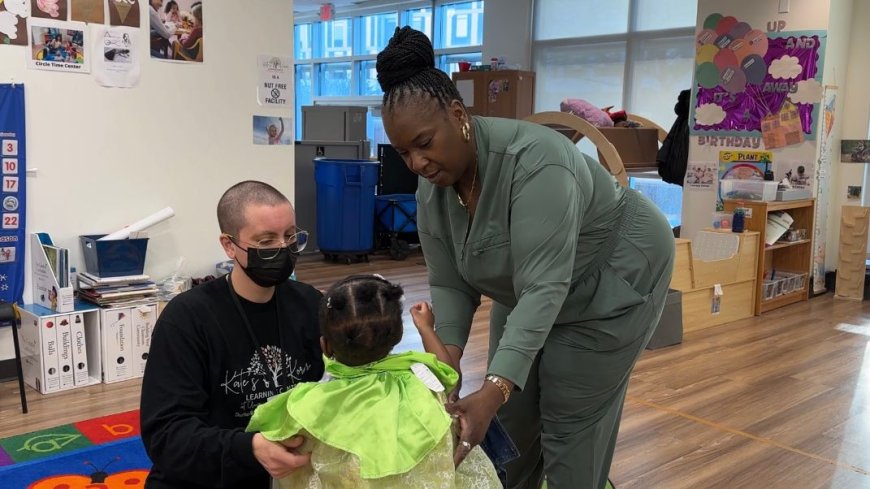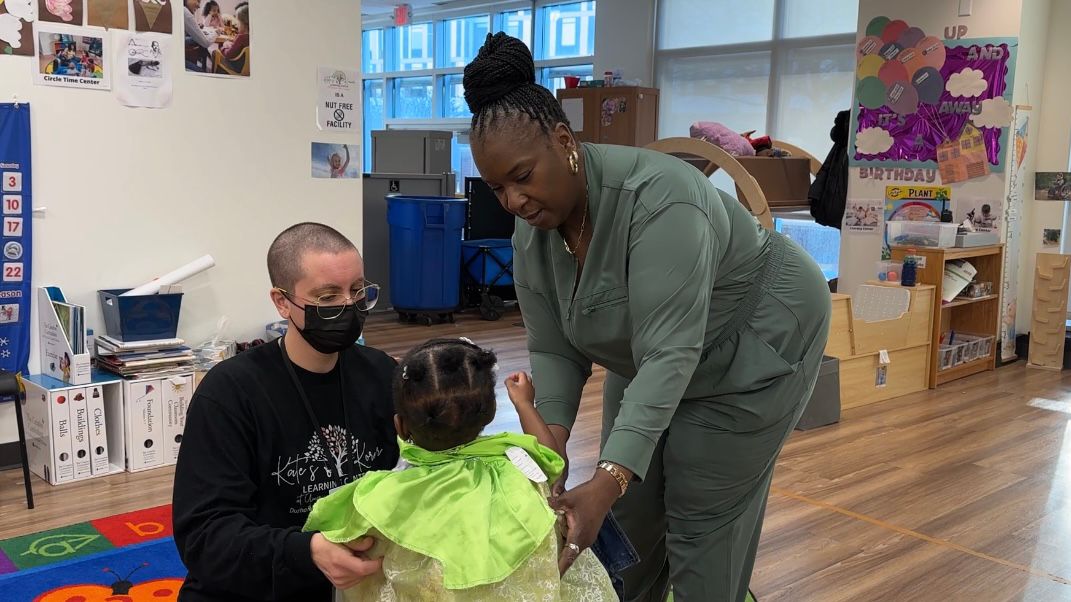Child care center looks to reimagine system in North Carolina
Child care center looks to reimagine system in North Carolina Spectrum News


DURHAM, N.C. – Kate’s Korner Learning Center Celebrates First Anniversary
For more than three decades, Kate Goodwin has worked in the early childhood field. While many centers across the state have struggled and closed over the last few years, her center, Kate’s Korner Learning Center, just celebrated its first anniversary.
Goodwin acknowledges that her achievement is not solely her own.
“It took a community to make this center work. It takes a community to continue to have it work,” Goodwin said.
The Impact of COVID-19 on Child Care Centers
Since the start of the COVID pandemic, there has been increased attention on child care centers across the state. According to NC Child, from February 2020 to the summer of 2023, more than 200 centers closed in North Carolina.
This loss of centers puts pressure on working families, childcare workers, and the children themselves.
Addressing Brokenness in Early Childhood Education
Goodwin believes that the early childhood education system has inherent flaws, which were further exposed by the COVID-19 pandemic.
One area that Goodwin is actively working to correct is the investment in staff.
At Kate’s Korner Learning Center, staff members receive higher pay, more benefits, and education opportunities. While this model may not generate substantial profits, it has proven to be beneficial for everyone involved.
“We don’t have a lot of call outs because we offer a four-day work week for our educators. They have a day off to do things they wouldn’t normally have time for,” Goodwin said.
Goodwin has noticed that families appreciate the stability provided by her center. Parents express gratitude that their children are not encountering new faces every day and that there are dedicated individuals invested in their children’s development.
Government Investment in Child Care Centers
Both the federal and state governments have recognized the importance of investing in child care centers.
The North Carolina legislature has allocated funds for child care stabilization grants to support staff pay after federal funding ran out.
Neil Harrington, the Research Director at NC Child, highlights the positive returns on investment in quality child care programs. Studies have shown that for every dollar invested, the return to the state is approximately $12.
However, the state funding is set to expire in June, posing potential challenges for sustaining these investments.
A Commitment to Change and Empowerment
Goodwin acknowledges that changing the traditional model of early childhood education requires intentional effort. She is committed to this ongoing work.
She recognizes the historical expectation that educators should leave their personal problems at the door and solely focus on caring for the children. Goodwin believes this approach is impossible and unfair. Instead, she aims to empower her educators, who she considers the most important individuals in the building.
Despite the challenges, Goodwin is determined and prepared to continue this important work.
SDGs, Targets, and Indicators in the Article
1. SDGs Addressed or Connected to the Issues Highlighted in the Article:
- SDG 4: Quality Education
- SDG 5: Gender Equality
- SDG 8: Decent Work and Economic Growth
- SDG 10: Reduced Inequalities
2. Specific Targets Under Those SDGs Based on the Article’s Content:
- SDG 4.2: By 2030, ensure that all girls and boys have access to quality early childhood development, care, and pre-primary education so that they are ready for primary education.
- SDG 5.4: Recognize and value unpaid care and domestic work through the provision of public services, infrastructure, and social protection policies and the promotion of shared responsibility within the household and the family.
- SDG 8.5: By 2030, achieve full and productive employment and decent work for all women and men, including for young people and persons with disabilities, and equal pay for work of equal value.
- SDG 10.2: By 2030, empower and promote the social, economic, and political inclusion of all, irrespective of age, sex, disability, race, ethnicity, origin, religion, or economic or other status.
3. Indicators Mentioned or Implied in the Article to Measure Progress towards the Identified Targets:
- Indicator for SDG 4.2: Percentage of children enrolled in quality early childhood development programs.
- Indicator for SDG 5.4: Proportion of time spent on unpaid care and domestic work, by sex, age, and location.
- Indicator for SDG 8.5: Average hourly earnings of employees, by sex and occupation.
- Indicator for SDG 10.2: Proportion of population reporting having personally felt discriminated against or harassed in the previous 12 months on the basis of a ground of discrimination prohibited under international human rights law.
Table: SDGs, Targets, and Indicators
| SDGs | Targets | Indicators |
|---|---|---|
| SDG 4: Quality Education | 4.2: By 2030, ensure that all girls and boys have access to quality early childhood development, care, and pre-primary education so that they are ready for primary education. | Percentage of children enrolled in quality early childhood development programs. |
| SDG 5: Gender Equality | 5.4: Recognize and value unpaid care and domestic work through the provision of public services, infrastructure, and social protection policies and the promotion of shared responsibility within the household and the family. | Proportion of time spent on unpaid care and domestic work, by sex, age, and location. |
| SDG 8: Decent Work and Economic Growth | 8.5: By 2030, achieve full and productive employment and decent work for all women and men, including for young people and persons with disabilities, and equal pay for work of equal value. | Average hourly earnings of employees, by sex and occupation. |
| SDG 10: Reduced Inequalities | 10.2: By 2030, empower and promote the social, economic, and political inclusion of all, irrespective of age, sex, disability, race, ethnicity, origin, religion, or economic or other status. | Proportion of population reporting having personally felt discriminated against or harassed in the previous 12 months on the basis of a ground of discrimination prohibited under international human rights law. |
Behold! This splendid article springs forth from the wellspring of knowledge, shaped by a wondrous proprietary AI technology that delved into a vast ocean of data, illuminating the path towards the Sustainable Development Goals. Remember that all rights are reserved by SDG Investors LLC, empowering us to champion progress together.
Source: spectrumlocalnews.com

Join us, as fellow seekers of change, on a transformative journey at https://sdgtalks.ai/welcome, where you can become a member and actively contribute to shaping a brighter future.







